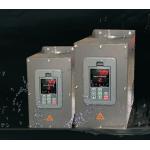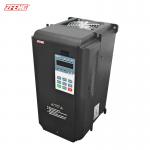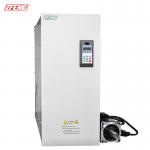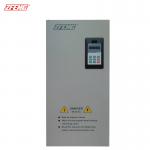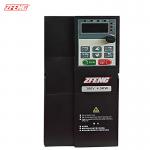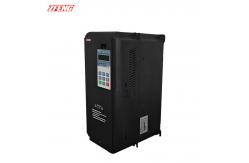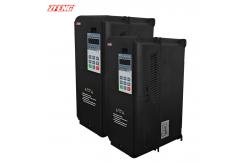ZFeng 900 Series 22Kw-T-G General Vector Variable Frequency Drive
Variable frequency drive (VFD) can be divided into voltage
type and current type according to the nature of DC power supply;
According to the transformation process, it can be divided into
AC-DC-AC and AC-AC frequency converters. Its advantages include
smooth soft start, infinite speed regulation, improved working
speed, convenient access to communication network control, and
realization of production automation control.
As the core equipment of industrial control, frequency converters
have deeply penetrated into fields such as energy, manufacturing,
and people's livelihood. Its technological advantages are
significant, and market demand continues to grow. In the future, it
will further evolve towards intelligence and greenness, helping
global industrial transformation and sustainable development.
Working principle
Rectification: Convert alternating current into direct current.
Filtering: Smooth DC power and reduce fluctuations.
Inverter: Convert DC power into AC power with adjustable
frequency/voltage through IGBT switches.
Control unit: Adjust output according to requirements to achieve
precise control.
Application areas
- Industrial sector:
Pumps: Water plants, chemical pumps, energy-saving speed
regulation.
Fan: Wind regulation for steel mills and power plants.
Compressor: energy-saving operation of refrigeration and mining
equipment.
Rolling mill/winch: precise control in the metallurgical industry. - Civil and Commercial
Air conditioning: energy-saving renovation of central air
conditioning refrigeration pump.
Elevator: Smooth speed regulation to enhance ride comfort.
Washing machine: Variable frequency motor improves washing
efficiency. - Special Scene
Music Fountain: Control the dynamics of water flow.
Offshore oil extraction: stable control of submersible electric
pumps.
Printing and dyeing machinery: Multi unit synchronous speed
regulation to improve fabric quality.
Market Environmental Protection
- Energy conservation and reduction of carbon
emissions: Frequency converters reduce carbon emissions by
optimizing motor operating efficiency and minimizing unnecessary
energy consumption. In equipment such as fans and pumps, frequency
converters can adjust the speed according to actual needs, avoiding
energy waste caused by traditional adjustment methods such as
baffle adjustment.
- Pollution reduction: In certain specific applications, such as
industrial smoke exhaust, exhaust, and dust removal control,
frequency converters can help equipment operate more accurately and
reduce pollutant emissions.
- Supporting clean energy: Variable frequency drives are used in the
field of new energy, such as wind power generation and solar power
generation, to control the operation of power generation equipment
and improve the efficiency of clean energy utilization.
- Promote resource recycling: In environmental protection loads such
as sewage treatment, frequency converters are used to control the
operation of treatment equipment, improve treatment efficiency, and
promote the recycling of water resources.
